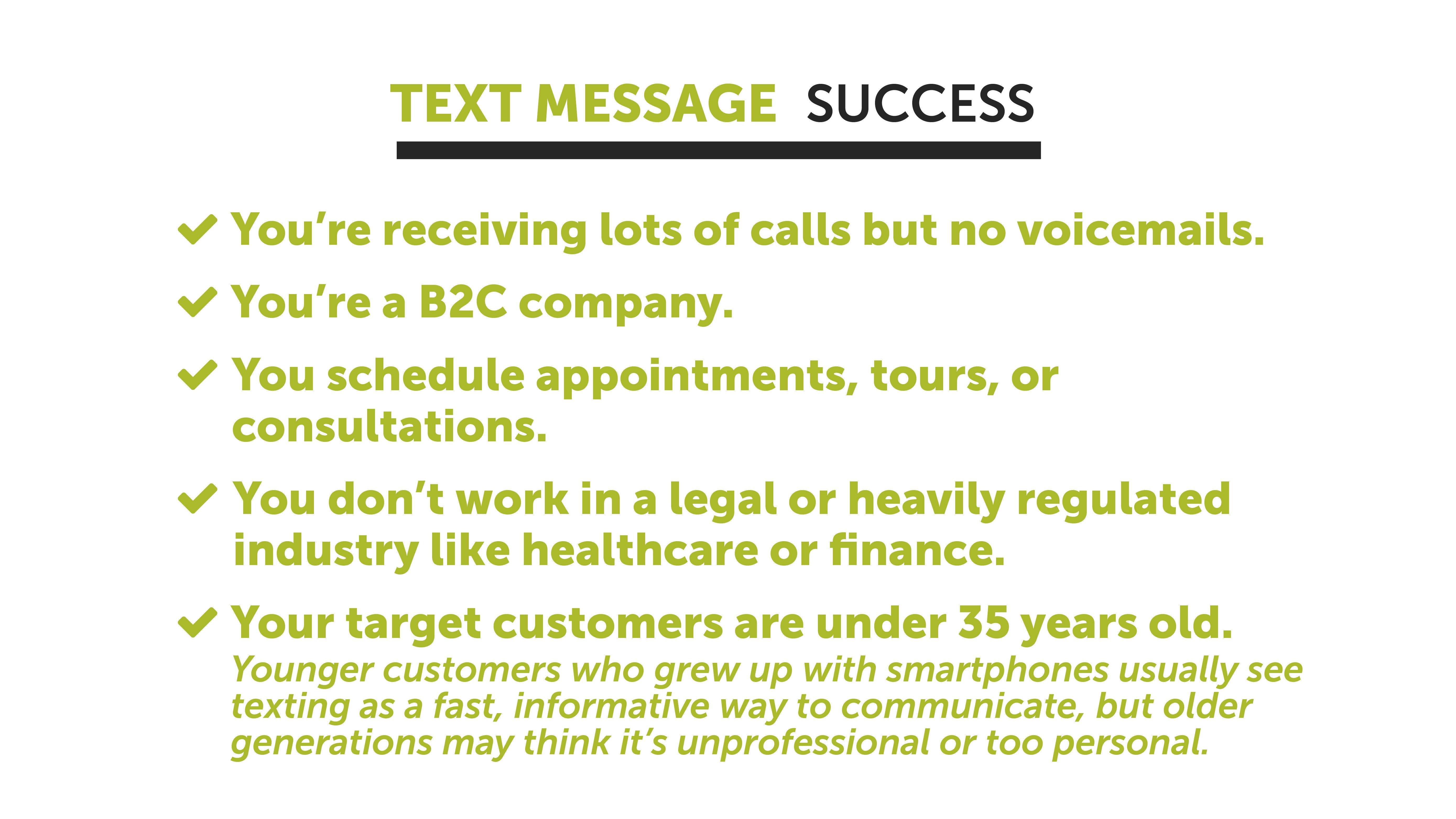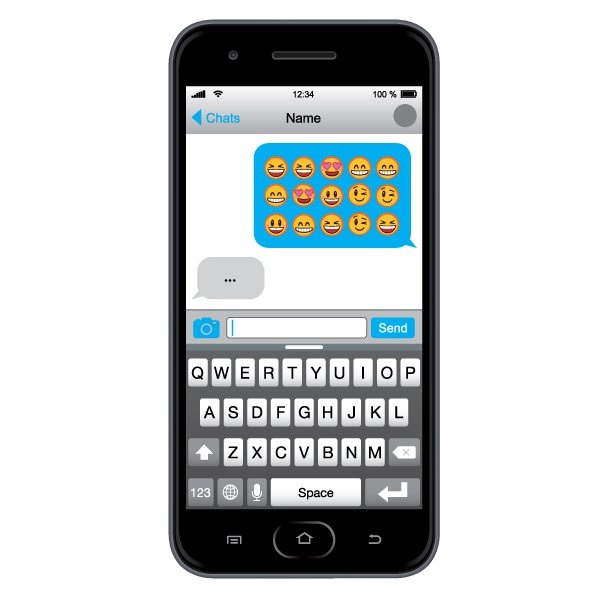Imagine the last time you called a business and heard the phone ring forever, only to reach a monotone greeting or a dead end voicemail box.
Super annoying, right?
Now imagine your prospective customers having that experience.
Ouch.
Think of your phone system as a marketing channel, regardless of whether your company has brick and mortar stores or lives online. Its performance should be optimized just like the rest of your PPC strategy—no different than your PPC consultant tweaking campaigns to achieve better results. After all, a high-performing campaign won’t boost sales if the leads that it’s generating can’t get in touch with you.
And plenty of folks want to get in touch. Research shows smartphone calls are seeing tremendous growth, with BIA/Kelsey reporting that annual calls to businesses from smartphones will reach 162 billion by 2019. With the impact this growth could have on your business, there’s no time like the present to reevaluate if you’re using your phone system and text message marketing to their full potential—and we’re here to help.
Evaluating phone performance with call tracking

No matter how many hours a day you’re open, how many customer service reps you have, or how sophisticated your phone system is, every business is susceptible to calls falling through the cracks. And sometimes, you don’t even realize how bad the problem is.
One of ParaCore’s recent clients, a local beauty school, told us their admissions department was receiving lots of calls from the campaigns our team was running, but they weren’t seeing an increase in tour bookings. We knew campaign analytics weren’t going to help us determine where the disconnect was, so we turned to call tracking technology.
Call tracking lets you track details like which keyword the caller searched for, which website page the caller is dialing from, the percentage of calls answered, who answered the call, and whether the call arrived at the correct employee. You can even listen to call recordings for quality assurance.
In the beauty school’s case, we used call tracking to determine where phone communication was breaking down and provide suggestions on how the process could be improved to increase conversions and customer satisfaction. Turns out that 80% of calls to their admissions department were going unanswered, and 90% of those callers weren’t leaving a voicemail. With so many missed opportunities, the school desperately needed a new approach.
Was there room for improvement with their customer service? Absolutely. That’s why we recommended implementing call tracking. But considering their target audience is under 25, we had another idea that could help the school speak their customers’ language and boost conversions even more.
Texting: The millennial love language

Businesses and sales professionals used to love coming in and seeing that red light on their phone indicating they have new messages. Now, voicemails are becoming a nuisance. You can’t speed through them, they’re not searchable, and the millennial crowd simply refuses to leave them.
Think about the last time you called your kids. Did you get a call back or a quick text message response? Or consider what happens when your friend is running late to a get-together. Do they call you or send a “15 minutes away” text?
The majority of adults in the U.S. own a smartphone, and a large percentage prefer their phone over a computer as their primary technology tool. This presents a huge opportunity to reach your core audience in a way that is not only personal to them, but also more likely to capture their attention.
When we shared this data with the beauty school and recommended they text potential students instead of calling them back, the client was a little skeptical. How does text message marketing work? Was it realistic given their current team and workflow? Would people actually respond?
With our help, they found the answers to these questions and realized the value of texting callers back. Using this approach, they were able to save time, set up more consultations and tours, increase applications to the school, and speak their customers’ language. A win-win for everyone!
Is text message marketing right for your business?
As popular as smartphones are, certain companies will find more success with text message marketing than others. If your company matches this criteria, texting might be a good tactic for you.

Before jumping into text message marketing, be sure to talk about it with your PPC consultant to determine your goals, find a good tool (we’re fans of CallRail), and plan how to use it. Though texting can be powerful on its own, it’s often most effective when paired with call tracking, so we recommend talking to your agency about how to incorporate both into your PPC strategy.
Best practices to ensure you don’t become “that guy” (or girl)

Much like texting someone to ask them out on a date, texting potential customers is a make-or-break moment that shouldn’t be taken lightly. It’s more personal than an email or written letter, so follow these best practices to make sure you set the right tone and avoid turning them off:
- Use an informal, conversational tone, while maintaining a level of professionalism.
- Avoid using sales-y language or marketing buzzwords.
- Don’t use emojis or acronyms (like LOL or FWIW), unless they’re appropriate for your brand.
- Stay away from mass texts.
- Just like email or the phone, don’t harass people if they don’t answer. If you text them once or twice and no one responds, move on.
Drop us a line
As PPC nerds, we geek out over new technology and innovative ways to drive results. That’s why we love call tracking and text message marketing. Think it might be a good fit for you? Reach out for a free, no strings-attached consultation to see how these tactics could help drive more leads and connect with your customers.
Related Posts
- CallRail: Text Messaging
- CallRail: Integrations Overview
- CallRail: How to Block Spam Calls
- CallRail: Call Tagging
- CallRail: Notifications Overview
- CallRail: Activity Dashboard Overview
- CallRail: Interface Overview
- CallRail: Call Flow Tutorial
- CallRail: Form-to-Call Lead Handling
- CallRail: Multi-touch CPL Feature
- CallRail Keyword Spotting & Auto-tagging
- Call Tracking Overview
- CallRail Local Number Swap
- CallRail Bonus Features
- Using CallRail for Customer Service
- Call Flow Options
- Reporting With A Purpose
- Call Tagging, Scoring & Lead Classification
- CallRail Notifications
- How to Setup CallRail Integrations for Your PPC Campaign
- Creating & Using Phone Numbers in CallRail




